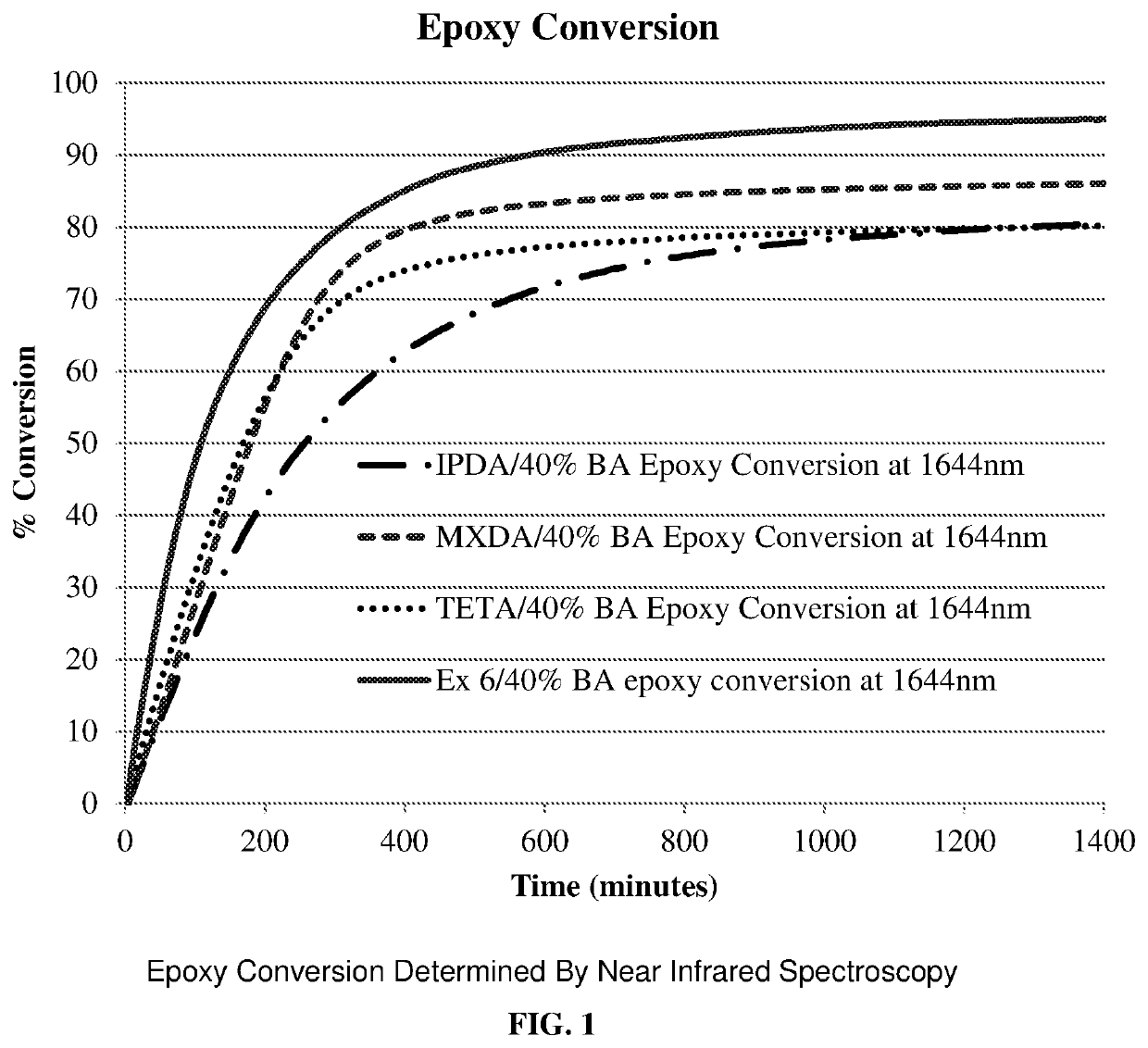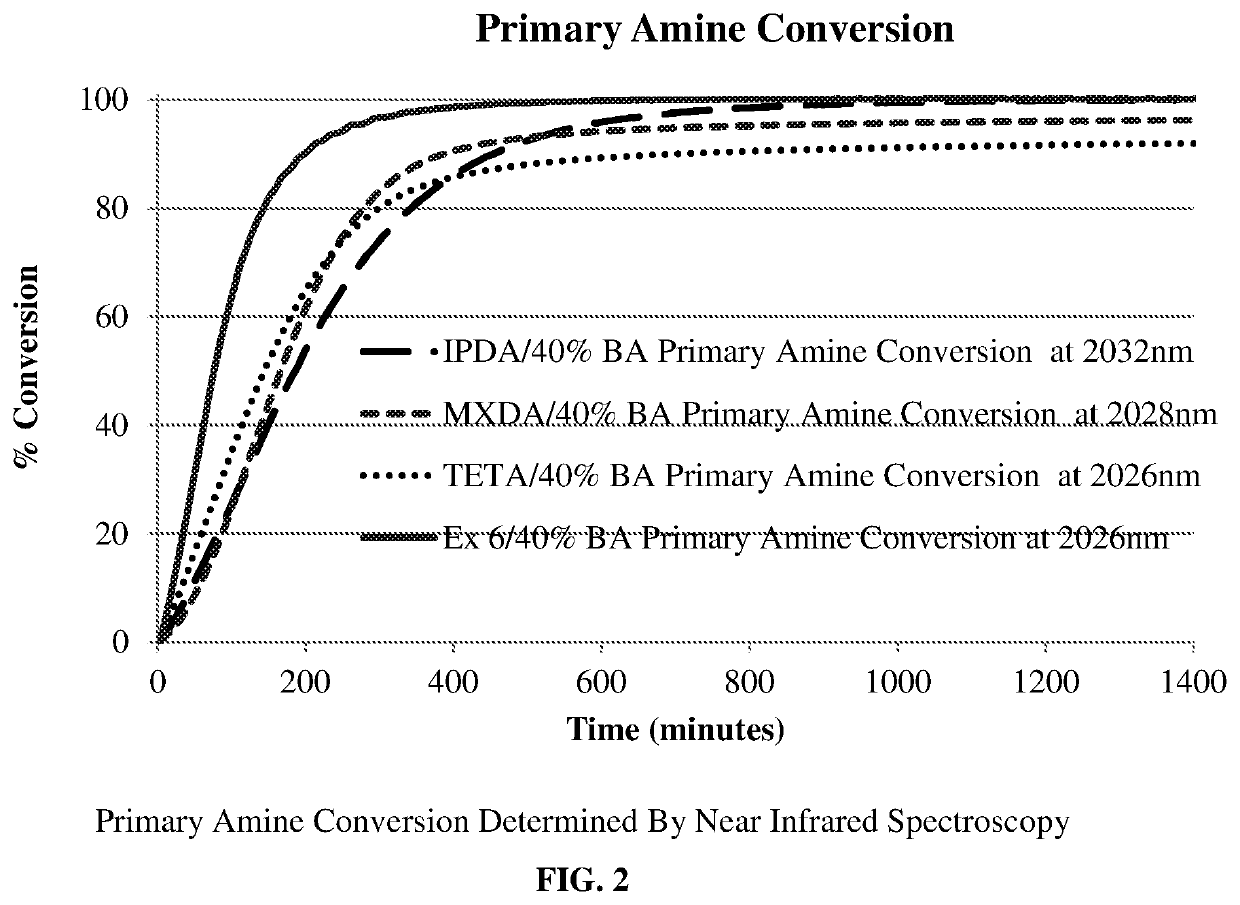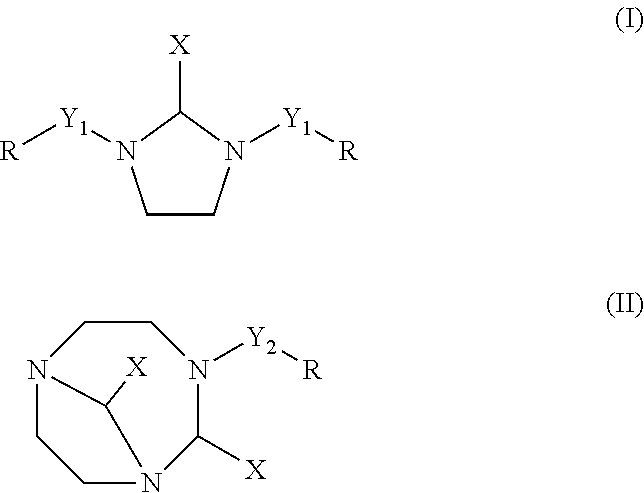Nitrogen-containing heterocyclic epoxy curing agents, compositions and methods
a technology of nitrogen-containing heterocyclic epoxy and curing agent, which is applied in the direction of epoxy resin coating, coating, organic chemistry, etc., can solve the problems of poor surface defects, greasy surface appearance, and many epoxy coatings that suffer from slow cure, so as to reduce the separation of curing agent and improve the compatibility with epoxy resin , the effect of reducing the separation of curing agent and speeding up the reaction rate of amine-epoxy
- Summary
- Abstract
- Description
- Claims
- Application Information
AI Technical Summary
Benefits of technology
Problems solved by technology
Method used
Image
Examples
examples
[0104]The following synthesis examples are provided to illustrate certain aspects or embodiments of the instant invention and shall not limit the scope of the claims appended hereto.
synthesis examples
[0105]Diethylenetiamine (DETA), formaldehyde aqueous solution were purchase from Aldrich. The reaction product was analyzed by gas chromatography (GC) to determine the amount of unreacted DETA, Metrohm titrator using Karl Fisher titration method for residual water content, Brookfield viscometer for viscosity, Metrohm titrator for amine value, and nuclear magnetic resonance (NMR) for chemical composition. The NMR experiments were performed at ambient temperature employing the Bruker DRX-400 FT-NMR spectrometer equipped with a 10 mm BBO probe. Quantitative 13C NMR data was acquired using inverse-gated decoupling, a 45° pulse, and a 6 second relaxation delay. The samples were dissolved in chloroform-d with chromium acetylacetonate added as a relaxation agent. The chemical shift scale was referenced to the solvent peak. GC analysis was performed on Agilent 7890 Gas Chromatograph equipped with a Agilent CP-Volamine 0.32 mm×30 m—column and a Flame Ionization Detector. The samples were pre...
example 1
Synthesis of Reaction Product of DETA with Formaldehyde at Molar Ratio of 1.25:1 Formaldehyde to DETA
[0106]DETA (250 g, 2.4 mol) was charge to a reactor equipped with a nitrogen inlet, a condenser, an addition funnel, and an overhead stirrer. To DETA was added formaldehyde aqueous solution (245.6 g, 3.0 mol) via an addition funnel to maintain temperature below 60° C. After the addition, the reaction was kept at 60° C. for 30 minutes. Water was then removed under reduced pressure. The product was obtained as a clear liquid in quantitative yield with amine value of 927 meqKOH / g, viscosity of 347 mPa·s at 25° C., water content of 0.41%, and residual DETA of 5.7%. NMR analysis showed that 57 mol % of DETA formed 1-(2-aminoethyl)imidazolidine, which corresponds to 56 wt % to the total weight in the product by calculation.
PUM
| Property | Measurement | Unit |
|---|---|---|
| temperature | aaaaa | aaaaa |
| temperature | aaaaa | aaaaa |
| temperature | aaaaa | aaaaa |
Abstract
Description
Claims
Application Information
 Login to View More
Login to View More - R&D
- Intellectual Property
- Life Sciences
- Materials
- Tech Scout
- Unparalleled Data Quality
- Higher Quality Content
- 60% Fewer Hallucinations
Browse by: Latest US Patents, China's latest patents, Technical Efficacy Thesaurus, Application Domain, Technology Topic, Popular Technical Reports.
© 2025 PatSnap. All rights reserved.Legal|Privacy policy|Modern Slavery Act Transparency Statement|Sitemap|About US| Contact US: help@patsnap.com



